Hanoi has many long-standing restaurants that have remained popular over the years. Not only do these restaurants have unique recipes, they also possess family heirlooms, which contribute to creating a special highlight for the restaurant’s culinary brand.
The secret to making delicious and popular ham
Located on Duong Thanh Street (Cua Dong Ward, Hoan Kiem District) with a modest area, the 3-generation ham and sausage shop of Mr. Nguyen Ly Tuan's family still stands out with a large signboard and menu, attached right next to the walkway.
In front of the shop, the glass cabinet displays dozens of types of ham, sausages and side dishes, divided into 4-5 compartments, taking up half of the facade, making anyone passing by have to look because it is so attractive.
According to Mr. Nguyen Ly Tuan - the current owner of the restaurant, his family's ham and sausage dish started being sold more than 70 years ago. He and his two younger brothers are the third generation in the family to take over the family business, which has been going on for about 40 years.
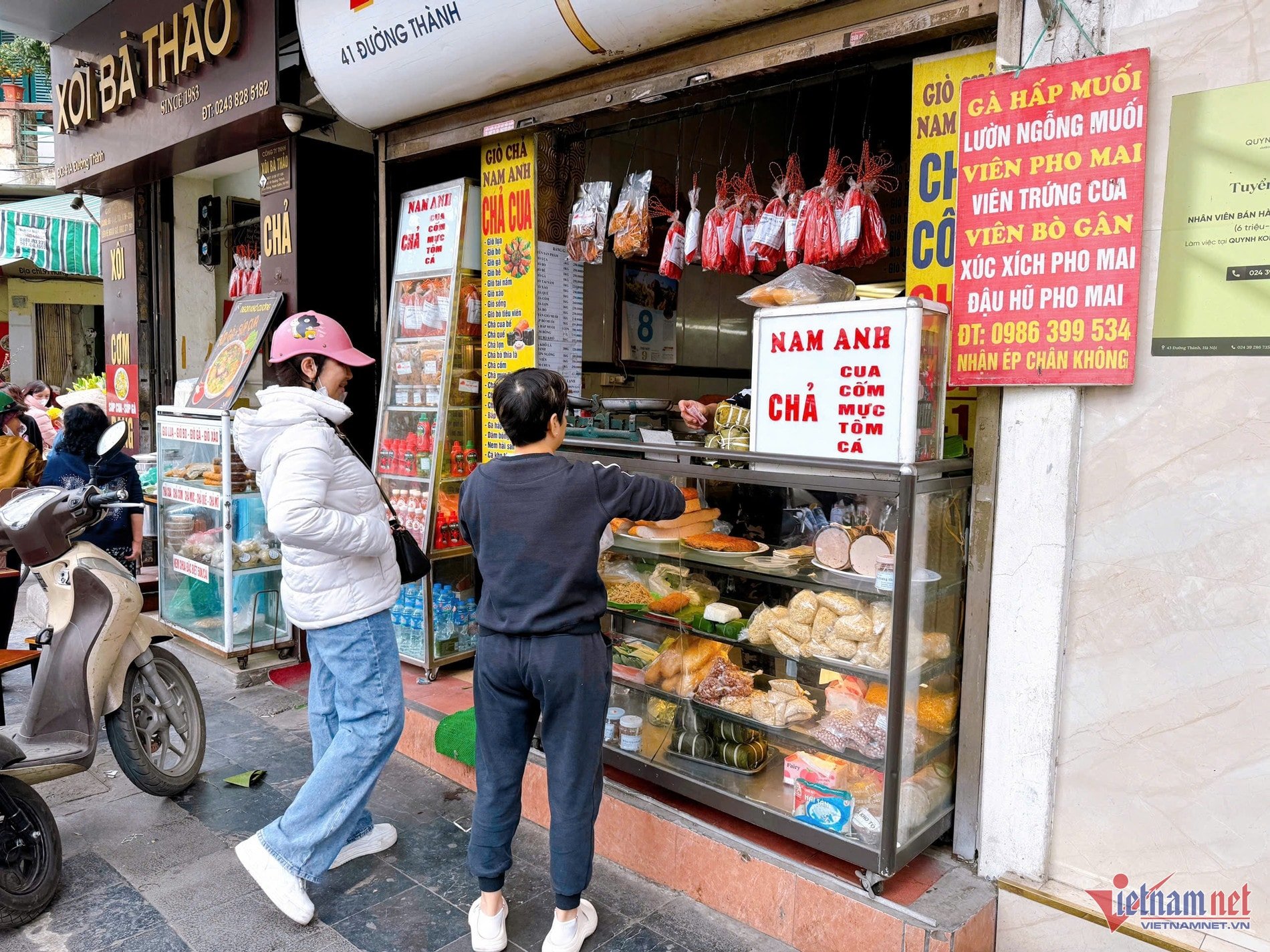
Currently, Mr. Tuan's 7 siblings and children work continuously from morning to night to have enough goods to sell to customers.
The whole family, each person has a job, some slice meat, some grind meat, some dip meat, some grill meatloaf, some wrap spring rolls... The most talkative and "quick-talking" member is given the responsibility of selling and serving customers who come to buy directly.
Mr. Tuan said that the restaurant currently sells about 15 types of ham and sausage. In addition to traditional dishes such as pork sausage, green rice sausage, fatty sausage, and cinnamon sausage, the restaurant has many new and unique dishes such as veal sausage, chicken sausage, mushroom sausage, crab sausage, etc., priced from 230,000-360,000 VND/kg.
Mr. Tuan's family's long-standing ham shop also serves other attractive side dishes such as salted steamed chicken, Chinese sausage, fermented pork rolls, cheese sausage, ham, etc.
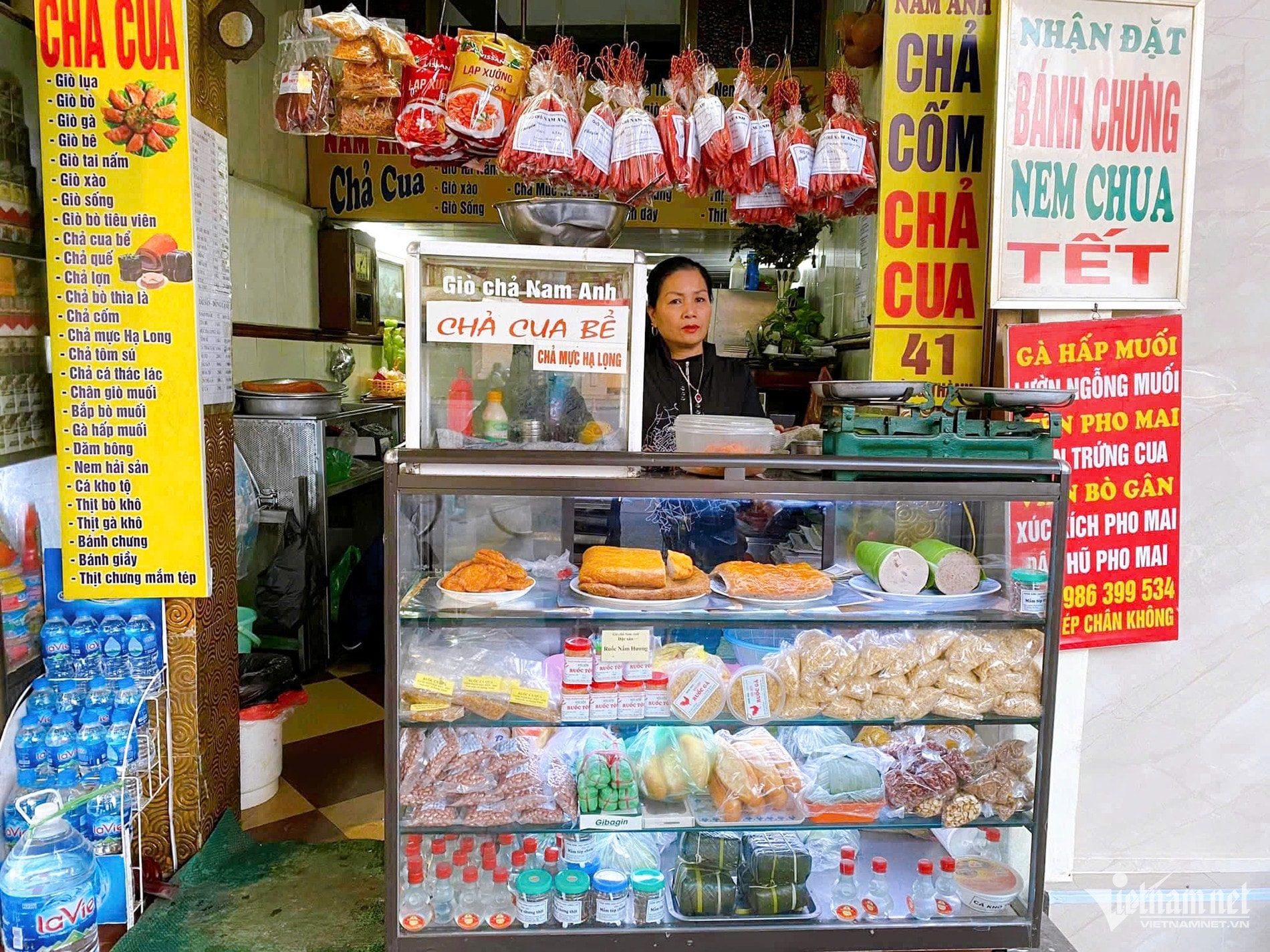
As the main salesperson, Ms. Nguyen Thi Tam assessed that in the restaurant’s menu, the “best seller” is the most popular and attractive dish. This dish was once considered a delicacy on the dinner table of many old Hanoi families.
Ms. Tam said that to make delicious marbled pork patties, the restaurant must choose fresh, sticky meat from the butt. The fat for the patties is taken from the shoulder and crispy nape. The ratio of fat and meat cannot be off by even a tael.
In addition to the selection of ingredients, the processing process must also apply traditional recipes to ensure delicious quality.
After being thinly sliced, the meat is put into a blender, with ice placed on top of the blender to make the meat into a smooth, soft mass without being broken down by heat. When the meat is pureed, spices are added and further blended, then mixed with fat.
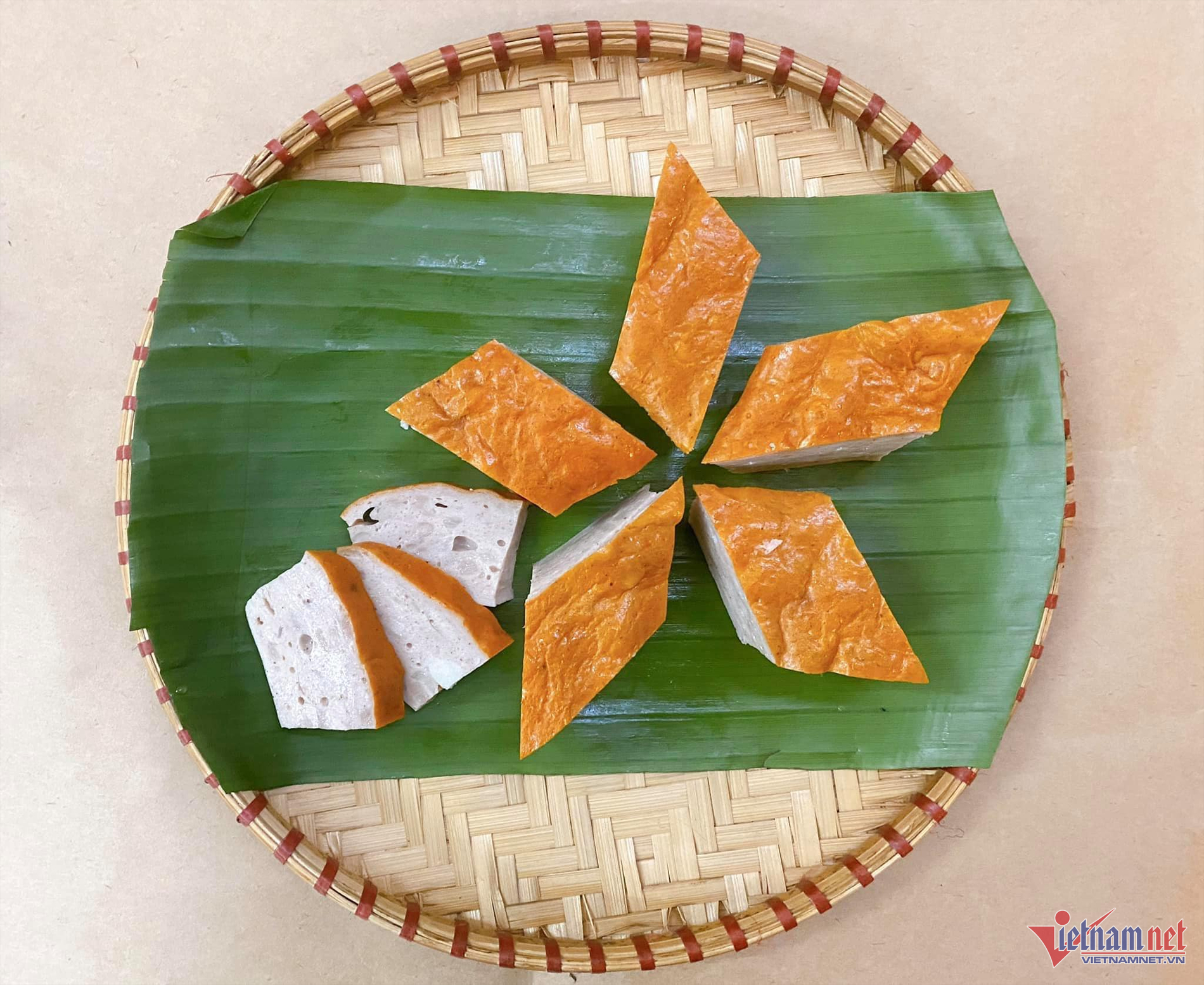
The fat is not mixed with the meat but must be diced evenly so that when cut, the meatloaf has an attractive pattern.
The patties will be steamed in blocks, coated with hibiscus flower color, then fried. “The finished product is of good quality when the meat inside is soft, the fat is clear, and the outer shell is golden brown, slightly shiny and crispy,” Ms. Tam shared.
In addition to the popular marbled pork roll, the restaurant's other ham and sausage dishes also attract customers. Each type has its own flavor, and when sold, they are wrapped in lush green banana leaves and newspaper on the outside.
Ancient “treasure” reminds of business philosophy
Regular customers of this traditional ham shop often tell each other about the ancient “treasure” that the shop still keeps. It is the scale that the shop often uses when customers come to buy ham here.
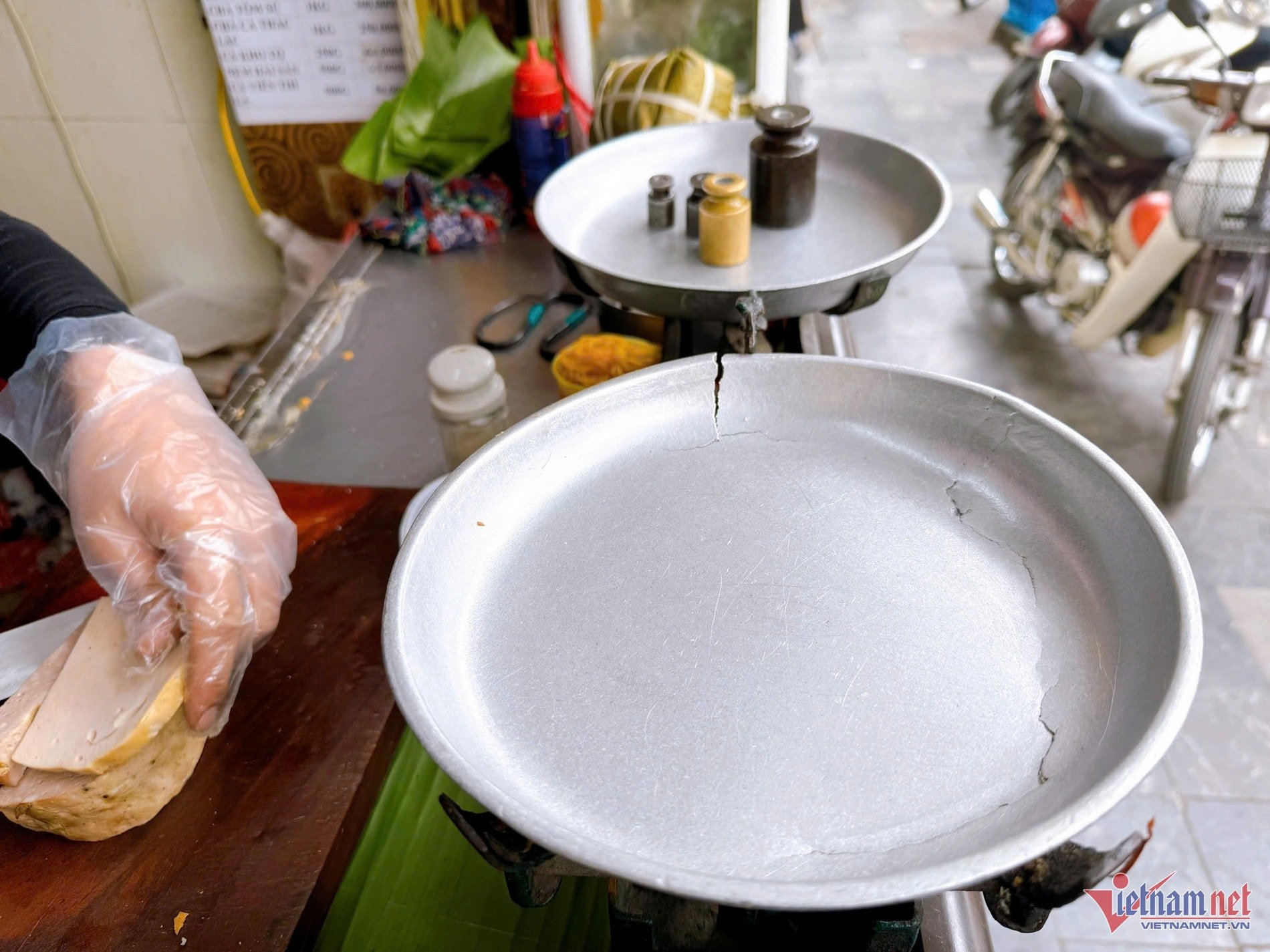
Ms. Tam said that the restaurant has dozens of modern electronic scales but they are only used in the "backstage" area. The family-owned scale is reserved for weighing finished products for customers.
This scale is about a hundred years old. Even though the scale is so old that the aluminum plate is cracked and chipped and the weight has no letters or numbers on it, the restaurant still uses it to “weigh and measure” dozens of customers every day.
Explaining why she uses a plate scale instead of other modern scales, Ms. Tam said that with the high and continuous weighing intensity of the restaurant, electronic scales are difficult to meet. They break down quickly, and their accuracy also fluctuates somewhat if used for a long time.
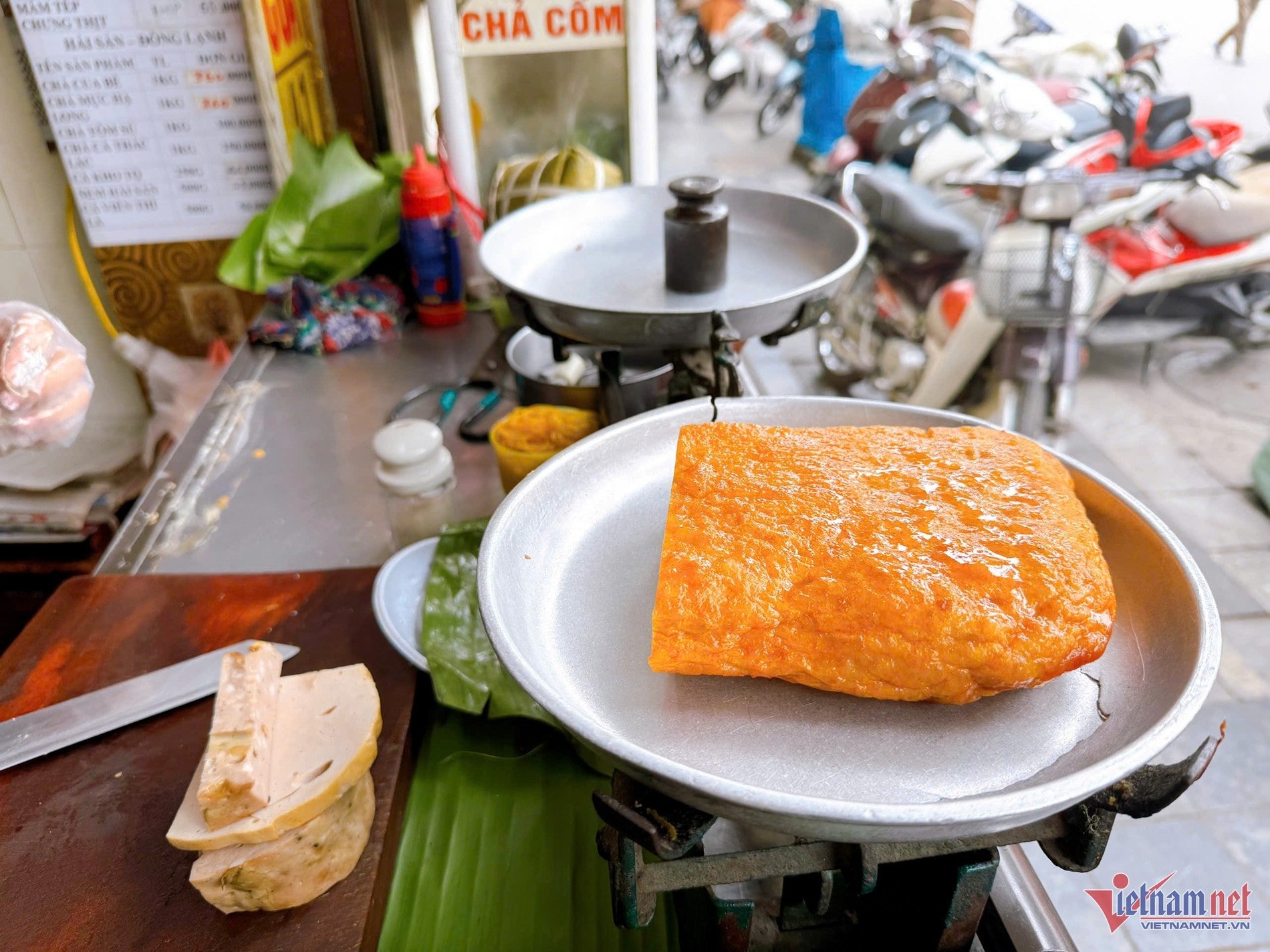
“The scale is not only durable, ensures accuracy, helps the restaurant maintain its reputation with customers for many years, but also creates a highlight in the restaurant's business activities. This is also a family heirloom, connecting generations of children in the family.”
In addition to the scale, this traditional ham shop also keeps a full set of weights, ranging from 5g, 10g... to 500g.
After each day of selling, the scale and weights are cleaned and carefully maintained.
Nestled on a sidewalk corner on Ba Trieu Street, Ms. Hong's pan-fried bread shop attracts customers thanks to its fatty pate and Soviet pans that have been used for decades.
Dear readers, please read the next issue: Hanoi sandwich shop uses a 40-year-old Soviet pan, customers hear the pleasant sizzling sound
Source: https://baohaiduong.vn/hang-gio-cha-3-doi-o-ha-noi-ngon-co-tieng-giu-chu-tin-nho-bau-vat-tram-tuoi-410612.html



![[Photo] The Government Standing Committee works with ministries and branches on the real estate market situation.](https://vphoto.vietnam.vn/thumb/1200x675/vietnam/resource/IMAGE/2025/5/24/e9b5bc2313d14c9499b8c9b83226adba)


















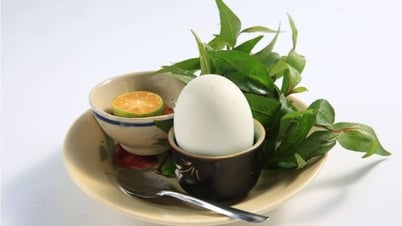

![[Photo] Ho Chi Minh City holds funeral for former President Tran Duc Luong](https://vphoto.vietnam.vn/thumb/1200x675/vietnam/resource/IMAGE/2025/5/24/9c1858ebd3d04170b6cef2e6bcb2019e)


































































Comment (0)